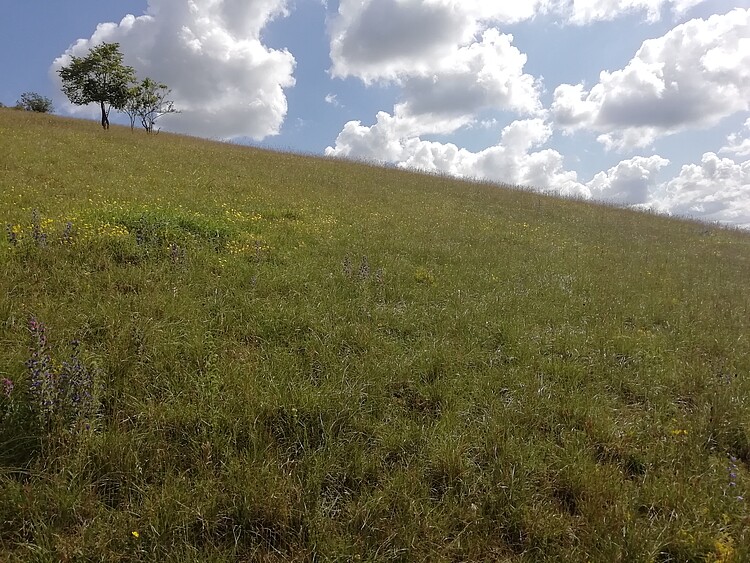Long-term dynamics and connectivity of calcareous grasslands in Central Europe

| Led by: | Hans Juergen Boehmer, Helene H Wagner |
| Team: | Helene H Wagner, Yessica Rico Mancebo del Castillo, Michelle F Dileo, Henry Lehnert, Bernd Raab |
| Year: | 1989 |
| Duration: | 1989-ongoing |
| Further information | https://www.researchgate.net/project/Evaluation-of-an-ecological-connectivity-network-of-grazed-calcareous-grasslands-after-30-years |
This project evaluates the long-term effects of an ecological connectivity network of calcareous grasslands in Bavaria, Germany. These grasslands host the highest diversity of plant and invertebrate species in central Europe, but due to land-use changes they are on the decline. A baseline survey in 1989/1990 established complete vascular plant species lists for all 62 previously abandoned calcareous grassland patches in the study area and assessed the presence of 48 habitat specialist plant species. An ecological connectivity network was initiated in 1990 to reconnect these patches with existing animal-grazed pastures, in particular sheep-grazed pastures because sheep are thought to be the primary dispersal vectors for calcareous grassland plants.
This long-term project evaluates the extent to which this landscape-scale connectivity network can restore functional connectivity among remnant patches of calcareous grasslands and ameliorate species losses in these communities. One goal is to genotype individuals from populations of flagship species such as Pulsatilla vulgaris and Dianthus carthusianorum and measure fitness-related traits. The research team is also testing whether the shepherding network explains functional connectivity, and if higher connectivity translates to higher genetic diversity and fitness of populations.
Funding: Government of Central Franconia, German Academic Exchange Service (DAAD), Natural Sciences and Engineering Research Council of Canada (NSERC), National Council on Science and Technology of Mexico (CONACYT), Landschaftspflegeverband Mittelfranken e. V., Landesbund für Vogelschutz in Bayern e.V.

